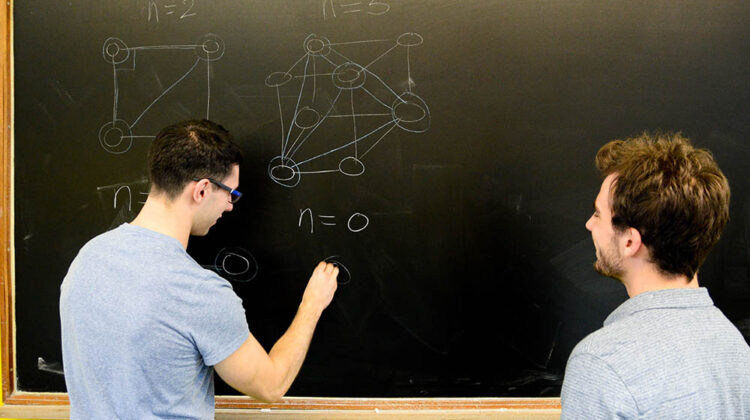Factsheet: Flipped Learning

Introduction
A flipped class is one that inverts the typical cycle of content acquisition and application so that students gain necessary knowledge before class and instructors guide students to actively and interactively clarify and apply that knowledge during class.
What is a flipped class? from the Faculty Innovation Center on Vimeo
What is this? What problems does this solve?
In a traditional model a student receives information in a lecture and practices related activities in their own time; a flipped model does the opposite. The student receives information at any time and practices the activities in the lecture.
The information that is made available is often online in the form of short videos (podcasts, screencasts, recorded demonstrations) that a student can watch, repeatedly, at any time. Many educators start flipping their classroom by using readily available materials such as online videos, podcasts, readings, and modules. Because direct instruction is delivered outside the group learning space, instructors can then use in‐class time to actively engage students in the learning process and provide them with individualized support (Summarised from: Brewer 2018).
Flipped learning, by its design, greatly encourages active learning, practice, and feedback. These things are known to increase student motivation and achievement. If those pieces are already in place we shouldn’t expect to see large improvements in these areas [Jensen 2015]. That said, active learning, practice, and feedback are often areas for improvement, hence most studies show a significant increase in student achievement with flipped learning (an increase of roughly 0.2 standard deviations [Cheng 2018]). This has to be balanced with students’ unfamiliarity with the new format and the motivation required to complete the out-of-class activities (students, particularly weaker students, find it hard to self-regulate their learning).
One of the most consistent comments from the lecturers who have implemented flipped learning within the faculty was that it was much more fun to teach than a lecture. Again that has to be balanced with the significant set up time (though some lecturers report that their subsequent delivery time is reduced).
Implementing Flipped Learning
Changing the way you teach a whole course unit can be a daunting prospect. It can also be unnerving for your students especially if the bulk of their programme is being taught in a more traditional style. A key element to the success for your flipped classroom approach is explaining to the students how and why you are moving to this methodology. The video below, from Nick Weise in the Department of Chemistry is a really great example of how to explain what Flipped Classroom is to your students.
Costs – How long does it take to set up & per semester?
The initial set up cost is high:
- A couple of days to plan (ideally done in conjunction with someone who has experience of this).
- ~5h to convert half a lecture into a video (assuming you are not changing the content very much).
- You may need extra question sheets or activities.
After the setup is complete, the running cost is lower than traditional lecturing:
- Many lecturers can half the number of lectures.
- You will need less time to prepare for each lecture.
Where can I learn more?
- Wikipedia
- Lo, Chung Kwan, Khe Foon Hew, and Gaowei Chen. “Toward a set of design principles for mathematics flipped classrooms: A synthesis of research in mathematics education.” Educational Research Review 22 (2017): 50-73.
- Cheng, Li, Albert D. Ritzhaupt, and Pavlo Antonenko. “Effects of the flipped classroom instructional strategy on students’ learning outcomes: A meta-analysis.” Educational Technology Research and Development (2018): 1-32.
- Brewer, Robin, and Sara Movahedazarhouligh. “Successful stories and conflicts: A literature review on the effectiveness of flipped learning in higher education.” Journal of Computer Assisted Learning 34.4 (2018): 409-416.
Benefits – Who benefits? How much? Why is it good? (Theory & Evidence)
- Cheng, Li, Albert D. Ritzhaupt, and Pavlo Antonenko. “Effects of the flipped classroom instructional strategy on students’ learning outcomes: A meta-analysis.” Educational Technology Research and Development (2018): 1-32.
- 55 papers included in the quantitative analysis, 148 studies on flipped learning in total. N=7912 students: flipped classroom (n=3727) or traditional classroom (n=4185). Significant effect size in favor of the flipped classroom instructional strategy (g=0.193; p<.001; with a 95% confidence interval of 0.113–0.274).
- Jensen, Jamie L., Tyler A. Kummer, and Patricia D. D. M. Godoy. “Improvements from a flipped classroom may simply be the fruits of active learning.” CBE—Life Sciences Education 14.1 (2015): ar5.
“We conclude that the flipped classroom does not result in higher learning gains or better attitudes compared with the non-flipped classroom when both utilize an active-learning, constructivist approach and propose that learning gains in either condition are most likely a result of the active-learning style of instruction rather than the order in which the instructor participated in the learning process”.
- Karabulut‐Ilgu, Aliye, Nadia Jaramillo Cherrez, and Charles T. Jahren. “A systematic review of research on the flipped learning method in engineering education.” British Journal of Educational Technology 49.3 (2018): 398-411.
- 15/30 studies found that students in the flipped classroom outperformed their counterparts in the traditional classrooms. 7 found no difference in performance. 2 found flipped learning to be less effective. The other reported mixed results.
- The benefits can be listed as flexibility, improvement in interaction, professional skills, and student engagement.
- Challenges included increased workload for faculty, student resistance, lack of opportunities for just-in-time questions, technical issues, decreased interest and neglected material.
Things to look out for (caveats & warnings)
- Students who expect the conventional mode of lecture-based teaching might find the sudden implementation of a new model disorientating.
- It’s probably best to talk to your Programme Director and Learning Technologist before starting on this.


